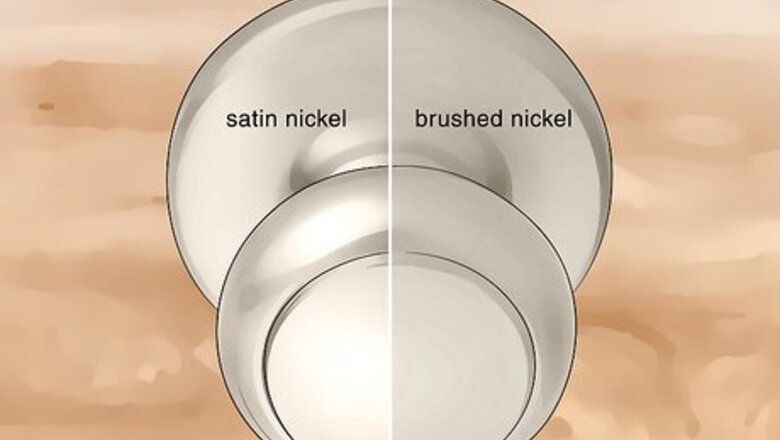
views
- The finish on brushed nickel is rougher and has a more rustic aesthetic.
- Satin nickel has a consistent and non-reflective texture that makes it appear very smooth.
- Satin nickel is more durable than brushed nickel, but pricier.
- Nickel is a popular metal used in faucets, showerheads, and doorknobs in residential areas and commercial areas as well.
Appearance
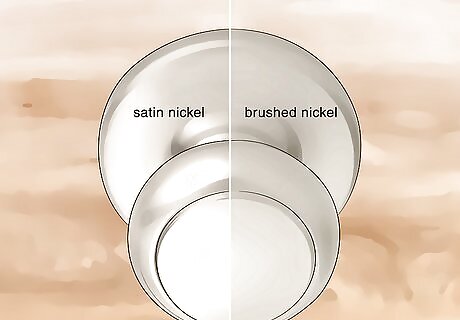
Satin nickel is glossy, while brushed nickel is a bit more dull. Thanks to its smooth texture and the lacquer treatment, satin nickel appears especially shiny and lustrous wherever it’s placed. Meanwhile, brushed nickel has a rougher texture and doesn’t reflect light as well. You can usually see the lines where the wire brush was run across its surface. Though, if you're going for a vintage style, that might be just what you're looking for.
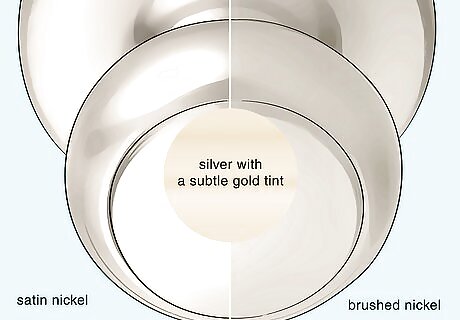
Both finishes will be silver with a subtle gold tint. Given that they’re made of the same metal, no matter whether you choose a satin finish or a brushed finish, you’ll still be left with a lustrous silver color with a subtle gold tint. So if you’re thinking about interior design, they will both likely pair with similar color schemes.
Cost
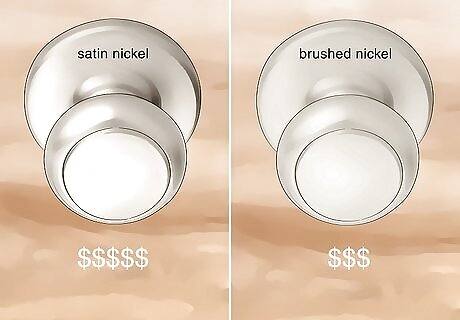
Brushed nickel is cheaper than satin nickel. Because of the more complex process used to make satin nickel, it’ll usually cost you more to finish whatever metal piece you’re working on with satin nickel as opposed to brushed nickel. For example, a nickel doorknob with a brushed finish will cost you around $10, while a satin finish will be something more like $13.
Durability
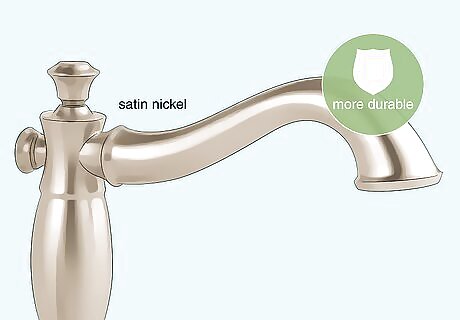
Satin nickel is more durable than brushed nickel. In this case, “durable” refers to its ability to stand against corrosion, general wear and tear, and becoming deformed after being exposed to certain elements. Thanks to the lacquer treatment it’s given at the end of the manufacturing process, satin nickel possess all of these properties and isn’t as likely to tarnish as easily as brushed nickel.
Upkeep
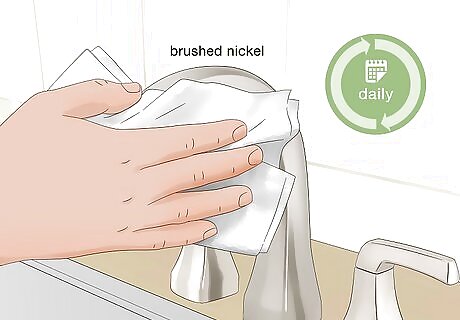
Regular cleaning is required to keep brushed nickel from tarnishing. A milky white tarnish can form on brushed nickel over time, especially when it’s placed where there’s lots of humidity, such as in a bathroom. To avoid this tarnish from building up, you’ll have to clean brushed nickel platings more often. On the other hand, the lacquer treatment given to satin nickel greatly slows down this tarnishing effect, so you won’t have to clean it that often. Fingerprints and scratches will also show up a lot more obviously on brushed nickel. Brushed nickel fixtures should be cleaned with a soft, damp rag daily. Satin nickel can be treated just with a soft cloth that’s either dry or slightly dampened, and only ever really needs to be cleaned when you see big smudges or spots that need to be polished.
Manufacturing Process
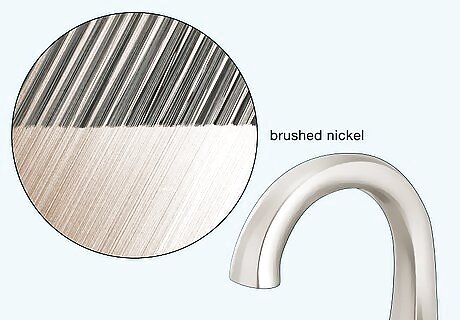
Brushed nickel is finished using a wire brush. The term “brushed” refers to the rougher looking finish the nickel is given. The metal is swept over with a wire brush or other tool and then treated with abrasive chemicals that really bring out the more rugged and rough quality of the finish.
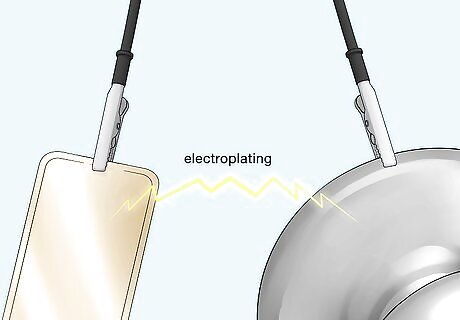
Satin nickel is made using electroplating. This is the process of plating one metal on top of another. In this case, nickel is being placed on top of another metal piece. The electroplating process is then followed by a lacquer treatment, leaving the finished nickel smooth and even looking.
When to Choose Satin vs. Brushed Nickel
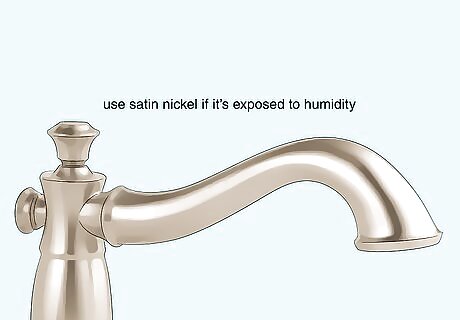
Use satin nickel on objects you want to last a bit longer. The lacquer treatment given to satin nickel makes it more durable than brushed nickel and less susceptible to tarnishing. For things like showerheads, faucets, and bathroom door knobs that are exposed to humidity and used more often, satin nickel might be your preferred choice.
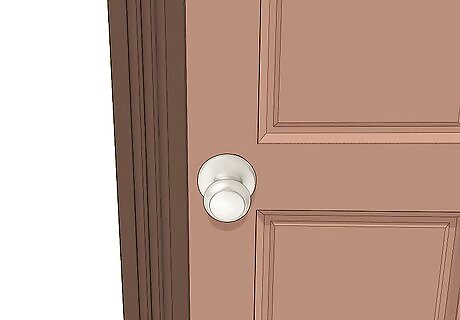
Choose brushed nickel for a hand-crafted aesthetic. The brush marks and rougher texture of brushed nickel give it a certain rustic charm, and it’s a very aesthetically pleasing finish to use in places like your kitchen sink faucets and door knobs. Both satin and brushed nickel have a very traditional look to them, but the brush strokes on brushed nickel just work to emphasize its super eclectic feel.
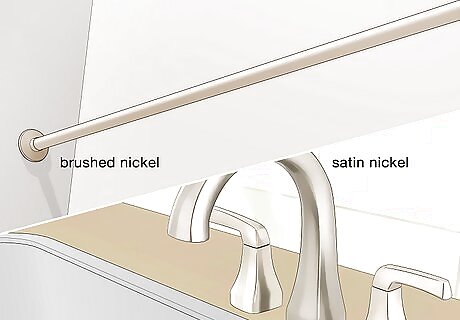
Mix and match the two finishes for your different needs. Since they’re both nickel, the two types are similar when it comes to color. So there’s no need to worry about picking out a separate color scheme for each type or worrying that they’ll clash with one another. If one area of your house would benefit more from satin nickel and another from brushed, feel free to utilize both. For example, you could used satin nickel on the door handle, faucets, and showerhead in the bathroom while using brushed nickel for accessories like towel racks and hooks.
Popularity in Interior Design

Nickel has a very traditional look but is still a popular choice. Chrome is one of the most popular choices today for faucets, light fixtures, and showerheads since it has a very sleek and modern look. However, that doesn’t mean that satin and brushed nickel are going out of style. It’s simply a matter of what kind of feel and look you want to give your space.















Comments
0 comment